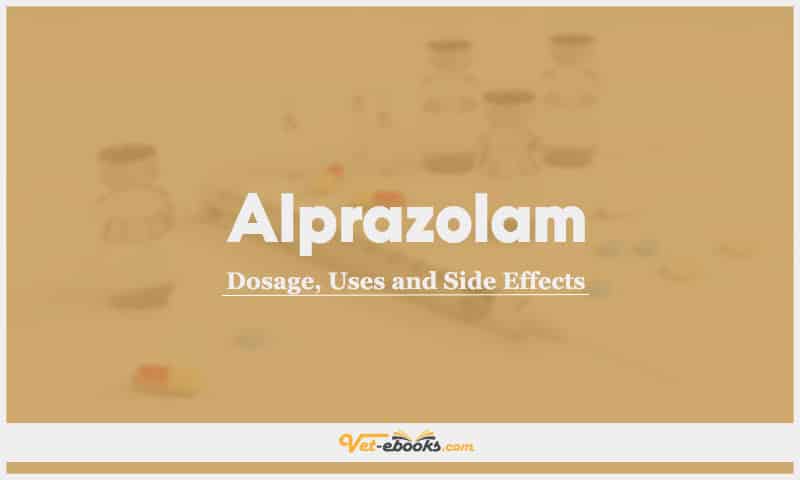Alprazolam for Dogs, Cats, and Horses: Dosage, Uses, and Side Effects Guide

Overview
Alprazolam increases the CNS’s GABA activity, which has a variety of cognitive effects, including the suppression of memory and a reduction in anxiety.
Uses of Alprazolam
- Dogs:
- Treatment for anxiety, panic disorders, or phobias, including noise phobias (e.g., thunderstorms).
- Used as adjunct therapy along with SSRIs or clomipramine for phobic behaviors.
- Cats:
- Treatment for urine spraying and anxiety-related behaviors.
- Short-term anxiolytic during transportation or stressful events.
- Used to address house soiling or marking.
- Horses (extra-label use):
- Facilitates mare-foal bonding and manages behavioral issues in aggressive mares during nursing.
Alprazolam Dose For Dogs, Cats, and Horses
Alprazolam for Dogs, Cats, and Horses:
| Species | Condition Treated with Afoxolaner | Dosage |
|---|---|---|
| Dogs: | Flea and tick control | 2.5–6.9 mg/kg orally once per month |
| Generalized demodicosis | 2.5 mg/kg on days 0, 14, 28, and 56 | |
| Sarcoptic mange | 2.5 mg/kg on days 0 and 28 | |
| Ear mites | 2.5 mg/kg monthly for two months | |
| Cats: | Ear mites and flea infestations | 2.5 mg/kg as a single dose (extra-label) |
| Pigs: | Sarcoptic mange | 2.5 mg/kg orally as a single dose (extra-label) |
| Birds (Peacocks, Pheasants): | Bird louse infestations | 2.5 mg/kg orally as a single dose (extra-label) |
Drug Dosage Calculator
You Should Give:
Common Side Effects of Alprazolam
- Dogs:
- Drowsiness, ataxia, and increased appetite.
- Rarely, paradoxical excitement or aggression.
- Cats:
- Increased appetite and transient ataxia.
- Potential for paradoxical behavior changes, such as agitation or vocalization.
Contraindications of Alprazolam
- If there is a Known hypersensitivity to benzodiazepines.
- Use with caution in patients with renal or hepatic disease.
- Not recommended during pregnancy or lactation.
- Avoid in animals with glaucoma or anxiously aggressive behavior, as disinhibition may worsen aggression.
Some Notes:
- Drug Interactions:
- Opioids: Increases the risk of respiratory depression.
- CNS depressants (e.g., barbiturates, propofol): Enhanced sedation effects.
- SSRIs (e.g., fluoxetine): May potentiate sedation.
- Antifungals (e.g., itraconazole): May increase alprazolam concentrations, causing excessive sedation.
- Antihypertensives: Increased risk of hypotension.
- Withdrawal and Dependence:
- Gradual tapering is essential to avoid withdrawal symptoms.
- Chronic use may lead to physical dependence.
- Monitoring and Administration:
- Monitor for signs of paradoxical aggression or excitement.
- Administer 30–60 minutes before stressful events for optimal effect.
- If the animal experiences vomiting on an empty stomach, administer with food.
Tip
Do You Want To Increase Your Veterinary Knowledge and Practical Skills?
You Can Now Browse and Download +3000 Books For Veterinary Professionals & Students Online.
Download Veterinary Books




















